Ballet Pirouette en Dehors – How to Perfect Your Technique
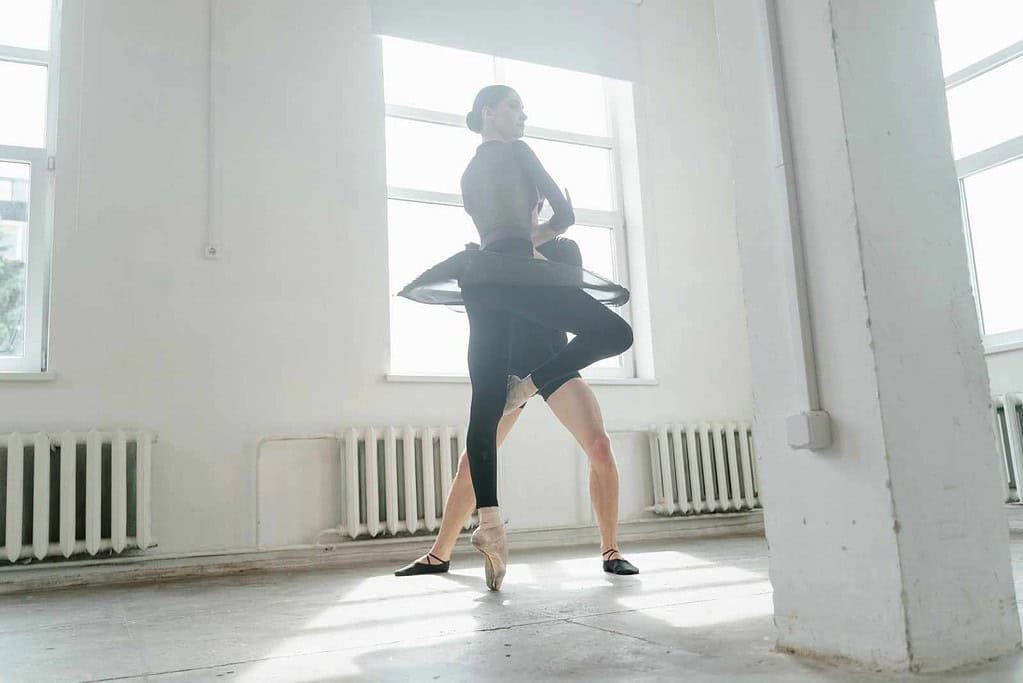
A ballet pirouette can captivate audiences due to their technical difficulty and precision.
Watching a dancer spin on one leg in perfect balance is a testament to their skill, training, and dedication to their art form.
While some dancers have a natural knack for turning, others may take time to master the precise positioning, alignment, coordination, and balance required for a flawless pirouette.
Achieving this skill involves a blend of technique, dynamics, spotting, and a courageous, can-do attitude.
It’s not just about physical ability!
It’s about believing in yourself and taking the leap, quite literally, to spin with confidence.
In this blog post, I’ll provide you with beginner and professional tips to master your ballet pirouette technique, specifically in regards to pirouettes en dehors.
Remember to always prioritise quality over quantity when practising pirouettes.
It’s crucial to master proper form and technique from the outset before aiming for multiple pirouettes as this will provide a foundation to build on.
In other words, a well-executed double pirouette with proper form is far more impressive than several turns that lack stability and control.
WHAT IS A BALLET PIROUETTE?
A Ballet Pirouette is a fundamental turning movement where a dancer spins around on one leg, typically with the other leg held in a position such as passé, a la seconde, attitude, or arabesque.
It requires balance, control, and technique to execute properly.
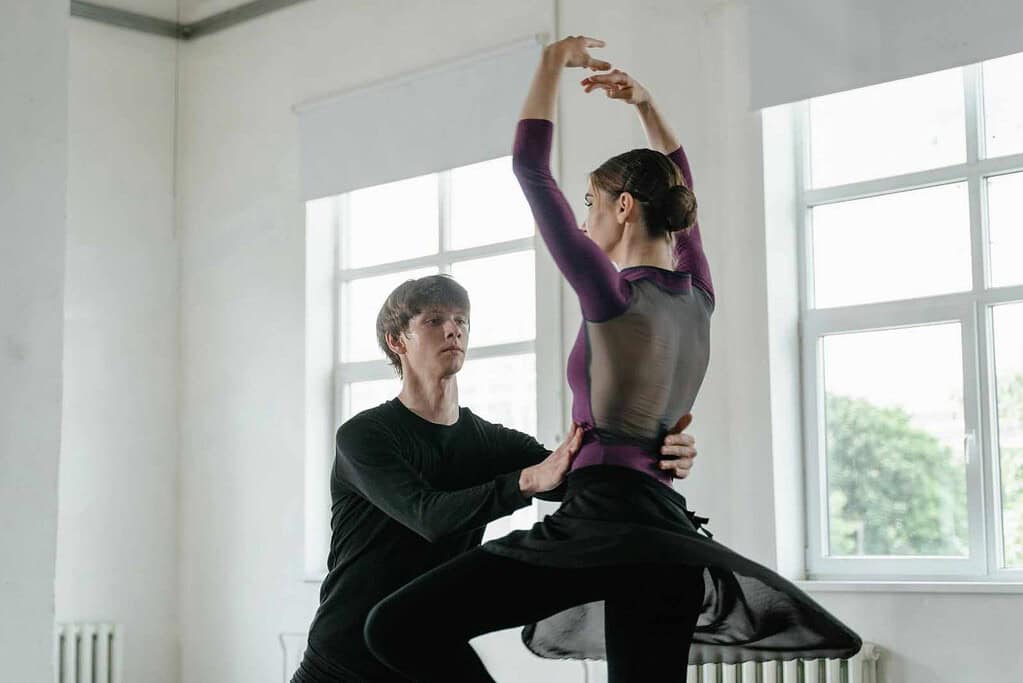
COMMON BALLET PIROUETTE MISTAKES
Here are three common ballet pirouette mistakes that can be easily avoided with practice and precision.
POOR HIP ALIGNMENT
One common mistake during a pirouette is losing hip alignment when lifting the working leg to retiré (or passé) position.
Lifting the hip disrupts body alignment and balance, making it challenging to control turns.
This instability can cause dancers to pull off their supporting leg or lean toward their working side, risking loss of balance and even falling.
Dancers should prioritise keeping both hips level and maintaining connection between the retiré, supporting leg, and equal sides of the body.
POOR PREPARATION IN 4TH POSITION
The second common mistake involves poor preparation in fourth position.
Several issues may arise including a stance that is either too narrow or too wide.
This results in an imbalance where the centre of weight is not evenly distributed between both legs.
Additionally, lifting either the heel of the front or back foot before initiating the turn can hinder stability (often causing you to fall forwards or backwards).
Addressing these problems is essential as they impact balance, stability, and the correct pressure needed in the lower legs to successful pirouettes.
Proper preparation is fundamental so press those feet into the floor!
POOR COORDINATION
The third common mistake is a lack of proper coordination between the lower body, upper body, and head during pirouettes.
When these elements are not synchronised, the body can become disjointed, moving in conflicting directions instead of working harmoniously.
It’s crucial to ensure coordination across all areas of the body.
This is where the legs and arms move together in unison while the head maintains correct spotting to facilitate smooth rotations.
BALLET PIROUETTE TIPS FOR BEGINNER DANCERS
Here are three tips for beginner dancers to incorporate into your daily practice to achieve a correct ballet pirouette technique.
TIP 1 – SPOTTING
While not easy, mastering spotting is essential for successful pirouettes as it helps prevent dizziness (especially for fouette turns).
Slow spotting can give a lethargic appearance to your pirouettes, while faster spotting enables quicker body rotations.
Spotting is a skill that requires constant practice and development, but it is well worth investing the time to work on.
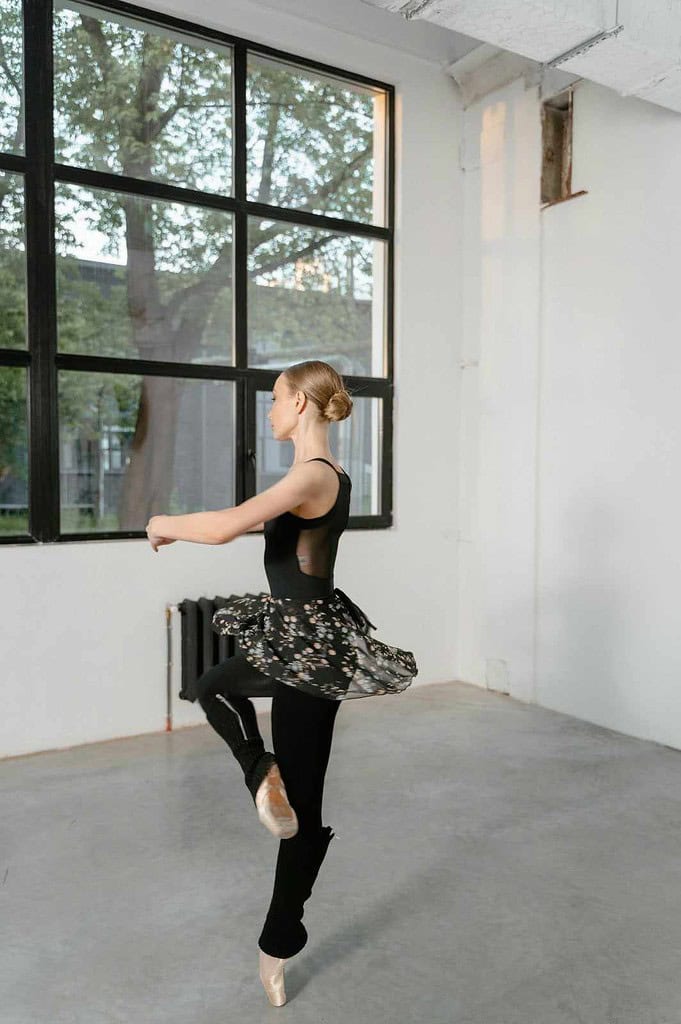
RECOMMENDATION
To practise spotting effectively, stand in front of a mirror and focus on a specific object or point that you can clearly see.
Quickly whip your head around so that your eyes return to the same focal point.
Keep your eyes wide open and your head level, avoiding any tendency to tilt to the side.
Gradually increase the speed and number of rotations while maintaining accuracy in your spotting.
This practice will enhance your ability to spot efficiently during pirouettes, resulting in cleaner and more controlled turns.
TIP 2 – ROTATING OUTWARDS FROM THE ANKLE AND THE KNEE
Maintaining proper turnout in both the supporting leg and the working leg in passé position is essential for developing correct form and technique in pirouettes.
This element not only contributes to the aesthetic but also serves a technical function by facilitating rotation during the pirouette.
As the hip opens and the knee pushes outward and around, this movement aids in the turning action of the pirouette.
Similarly, the ankle plays a critical role by continuously striving to rotate around, with the heel leading forward throughout the turn.
RECOMMENDATION
Visualising the three points of rotation (the ankle, hip, and knee) can be incredibly helpful when practising pirouettes.
Try envisioning a spiralling motion where everything turns outward and maintains proper turnout.
Focus on actively pushing the knee around and keeping the heel pushing forward throughout the turn.
This visualisation and intentional movement can:
TIP 3 – GET TO YOUR POSITION QUICKLY
The speed at which the working leg transitions from the floor to the retiré (passe) position is crucial for pirouettes.
This swift movement allows you to maximise the time available for rotations and ensures that your body is organised into a tight and compact position.
A quick transition to retiré can give you valuable extra seconds to execute the turn before coming down.
But it’s not just the legs!
The arms also need to swiftly come into a well-rounded and lifted first position with speed and accuracy.
The quicker a dancer can achieve the proper arm position, the more time they have to execute and control the turn effectively.
RECOMMENDATION
For this specific exercise, practice in front of a mirror to monitor your alignment and form, allowing you to assess the time it takes to achieve the necessary position.
Begin in a fourth position with your weight evenly distributed, pressing your heels down. This is your starting “and” count.
Swiftly bring your working leg to retiré and simultaneously bring your arms into first position on count “one.”
Maintain your relevé position, ensuring your hips are level, a high demi pointe, with your supporting side lifted and not leaning. Hold this position for counts “two and three.”
Perform a set of 5 repetitions, then rest and repeat, focusing on maintaining lift, support, and speed throughout your movements.
BALLET PIROUETTE TIPS FOR ADVANCED DANCERS
Here are three tips for advanced dancers, that build on the basic principles of a ballet pirouette, that can be incorporated into your daily practise to perfect this movement further.
TIP 1 – SUPPORT IN THE UPPER BODY- ARMS AND BACK
Developing strong support in the arms and back is essential for maintaining control and stability during pirouettes, resulting in smoother and more controlled turns.
While often the focus is typically given to the legs, it’s equally important to focus on the upper body.
This will provide stability and the necessary strength to stay upright and supported throughout the movement.
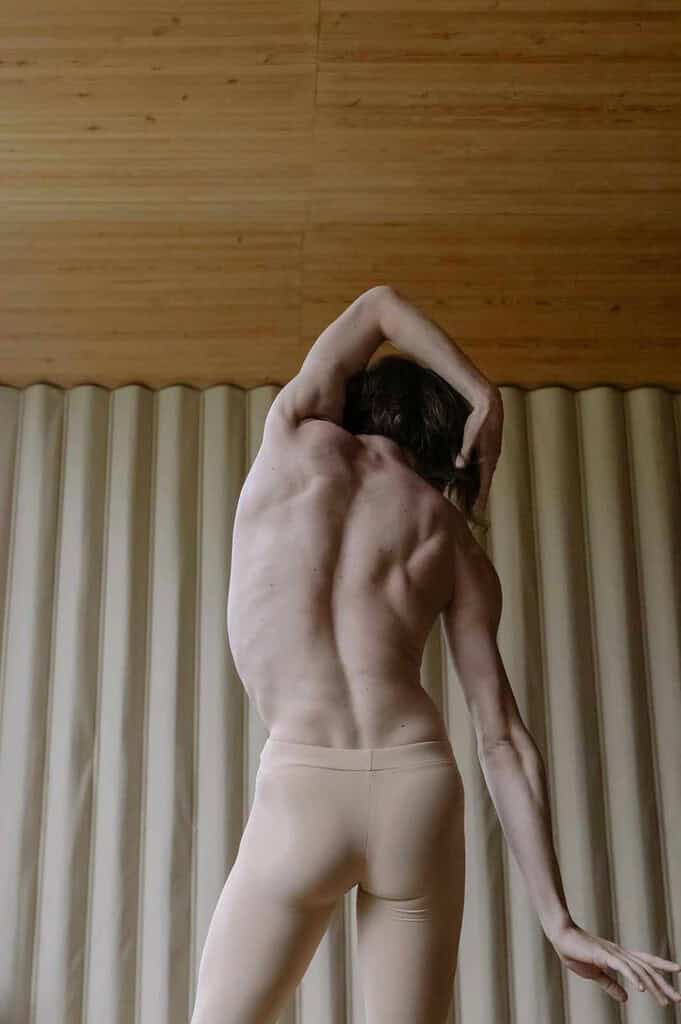
RECOMMENDATION
To find this lift and support across your upper body, begin in first position with lifted elbows (while keeping your shoulders down).
Imagine pulling outward from each elbow to engage and activate your latissimus dorsi muscles (your lats) in the back.
This engagement provides strength and stability to the upper back during rotations.
Maintain your arms at a height level with your belly button-not too high or too low- and sustain this position while rotating.
Always keep your arms centred in front of your body and avoid allowing them to deviate from this alignment, as it can disrupt coordination and balance.
TIP 2 – IMPROVE LOWER LEG CALF STRENGTH
Improving lower leg calf strength is crucial for executing successful pirouettes.
This is because the calves play a significant role in maintaining balance on a small platform, whether it’s demi pointe or pointe.
Strong calves enable you to sustain a high demi pointe position for extended periods, providing a solid foundation and turning platform.
RECOMMENDATION
A good way to enhance calf strength is by performing calf raises but with a bit of a twist.
Instead of raising up onto a straight leg, perform calf raises on one leg in a plié position (with the leg slightly bent).
Be mindful not to reach your maximum range of motion.
Instead, work within about 50% of your full range to increase the challenge for your lower legs.
Try completing 2 sets of 15 raises on each leg during this exercise.
By doing so, you’ll not only enhance your calf strength but also improve foot stability, which is essential for maintaining balance and control during pirouettes.
TIP 3 – THE POWER OF THE MIND
Once you’ve mastered the technique, overcoming mental barriers can be key for advancing in pirouettes.
While confidence and willpower are essential, learning to outsmart your mind can be a game-changer, especially when aiming for multiple rotations.
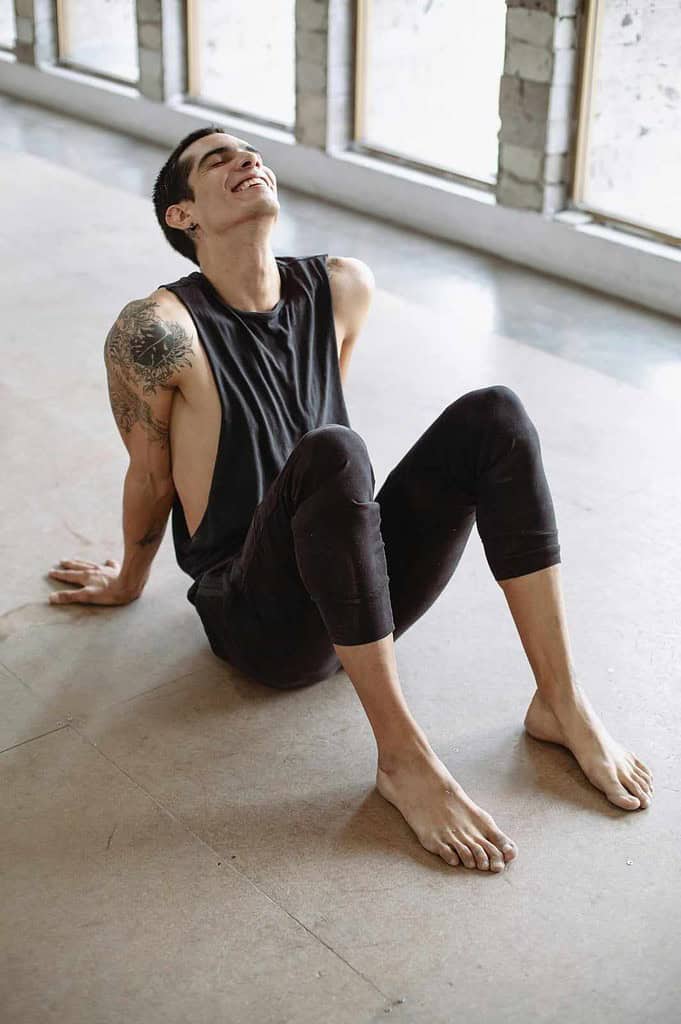
I like to approach pirouettes as something enjoyable rather than intimidating.
RECOMMENDATION
One technique I’ve found effective is using mental tricks taught by my teacher to distract my mind while turning.
During a pirouette, I use a simple phrase like “co-ca-co-la” where each syllable corresponds to one rotation.
I repeat this either silently or aloud, often surprising myself by achieving more rotations than expected.
Another trick is to count pirouettes differently, starting with “and” instead of “one”.
Give these methods a try to see if you can trick your mind into achieving your pirouette goals!
WRAP UP
By incorporating these tips and recommendations you can:
Listen to your body during pirouette practice to identify areas that require strengthening, improvement, or slight adjustments.
Each dancer’s experience with pirouettes is unique and can vary day by day.
Understand that developing ballet technique is a gradual process that requires patience and perseverance.
Embrace the journey of improvement and enjoy the progress you make along the way.
Consistent practice is key to mastering the art of pirouettes!






